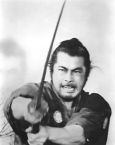ORIGINAL: witpqs
Sid,
I understand your answer to other folks' questions here, but mine still stands. Should the P-38 be rated that much lower in maneuverability? It's the degree that I'm concerned about. I fully understand angular momentum - that's why I initially said I understand an off-axis two-engine fighter will be inherently less maneuverable than a single engine fighter.
BTW I agree with rating bomber 'night-fighters' the same as the bomber. I just asking about a purpose built high-performance machine.
Well - maybe not.
This thread is my THIRD try to change the differential - in favor of the P-38 - in response to Rev's complaints about it.
Note that I ALREADY changed this relative differential once - and the proposed new standard moves father in that direction. Further note that the relative difference between dogs with many engines and P-38 is getting wider. That is the most we will ever be able to do: maybe we can make it better - but it is just a question of degree - not an absolute thing.
There is one thing I think may not have been done as I specified - and if that is so the present formula may work a little better (giving us about 1 more point in differential) - but I need to check that. I am trying to do this better.
I am not trying to please P-38 people - just get it relatively right compared to other things. P-38 is never going to rival a F4U-4 in maneuverablity - or a Nate for that matter. Those who think otherwise are never going to be happy with any reasonable formula. And frankly I will never be happy until I have
a) At least three different altitude maneuver factors
b) separate horizontal from vertical maneuver factors
But that is not an option in this version of WITP.












